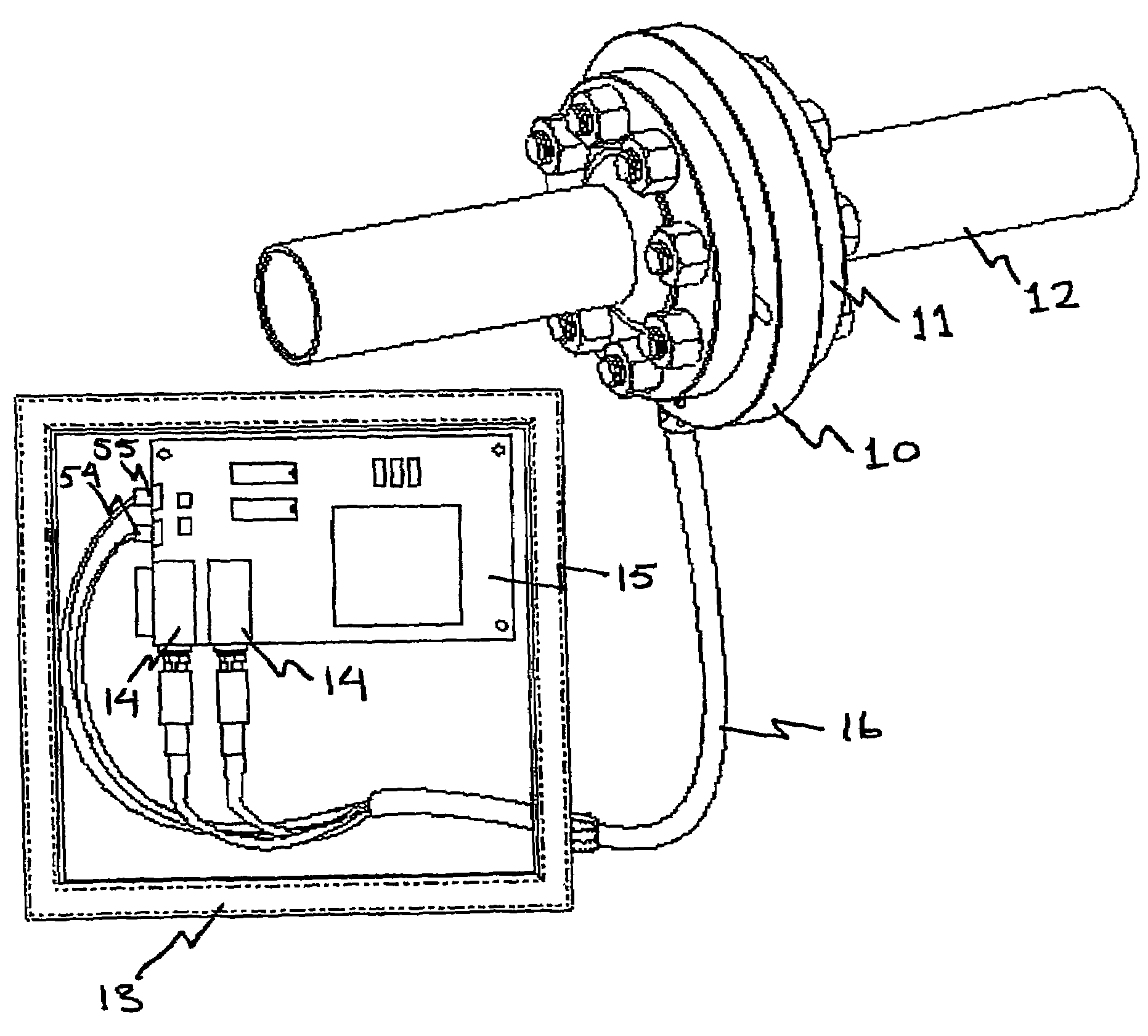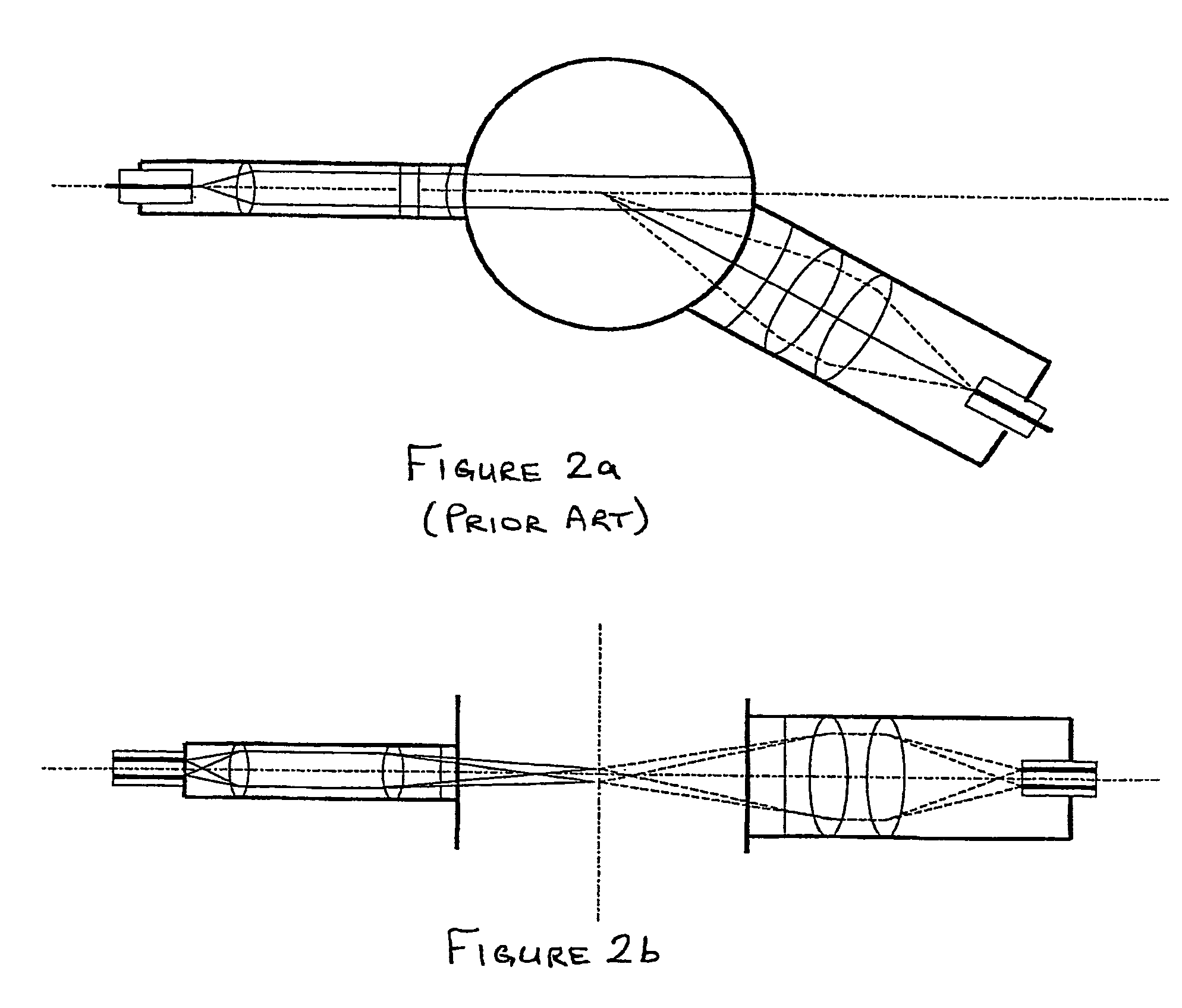Optical flow meter for measuring gases and liquids in pipelines
a flow meter and optical technology, applied in the field of optical flow meter, can solve the problems of low detection efficiency, low operating pressure and low flow rate, and low accuracy performance, so as to maximize the contrast of detected scattered light, improve signal detection integrity, and reduce beam convergence
- Summary
- Abstract
- Description
- Claims
- Application Information
AI Technical Summary
Benefits of technology
Problems solved by technology
Method used
Image
Examples
Embodiment Construction
[0038]There is shown in FIG. 3 an optical flow meter constructed in accordance with the preferred embodiment to determine the flow rate of a fluid in a pipe, by measuring the velocity of small particles carried by the fluid stream. The flow meter apparatus is comprised of an opto-mechanical head 10 inserted between adjacent flanges 11 in the pipe 12, an electro-optical assembly 13 which contains two laser light sources 14, two scatter signal photo-detectors 54 and 55, and processing electronics 15, and a fiber-optic extension cable conduit 16 which connects the electro-optical assembly 13 to the opto-mechanical head 10. In this configuration, the electro-optical assembly 13 can be located remotely so that no electrical potentials are present at the opto-mechanical head 10, which is desirable when the fluid passing through the pipe can be ignited by sparks or short circuits, such as natural gas. Furthermore, the fiber-optic terminations at the opto-mechanical head 10 are compact, rob...
PUM
| Property | Measurement | Unit |
|---|---|---|
| diameter | aaaaa | aaaaa |
| velocity | aaaaa | aaaaa |
| transparent | aaaaa | aaaaa |
Abstract
Description
Claims
Application Information
 Login to View More
Login to View More - R&D
- Intellectual Property
- Life Sciences
- Materials
- Tech Scout
- Unparalleled Data Quality
- Higher Quality Content
- 60% Fewer Hallucinations
Browse by: Latest US Patents, China's latest patents, Technical Efficacy Thesaurus, Application Domain, Technology Topic, Popular Technical Reports.
© 2025 PatSnap. All rights reserved.Legal|Privacy policy|Modern Slavery Act Transparency Statement|Sitemap|About US| Contact US: help@patsnap.com



